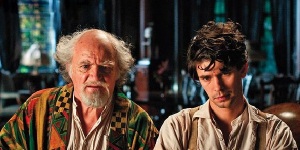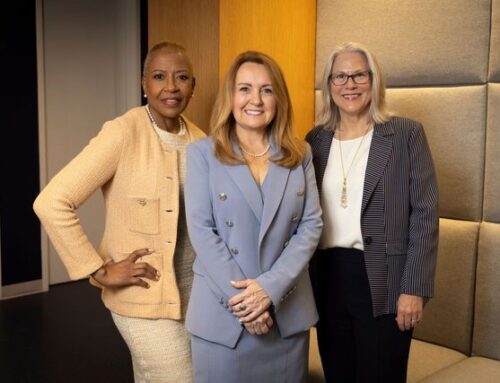Layered, ambitious, steeped in symbolism and philosophy, Cloud Atlas is almost everything you’d expect from a movie directed (or in this instance, co-directed) by the Wachowskis. “Almost” is a good thing in this instance, as the movie (based on David Mitchell’s novel) sheds most of the didacticism and visual excess that made the Matrix sequels and Speed Racer such slogging bores.
Lana and Andy Wachowski teamed with Tom Tykwer (Run Lola Run) to pull off a cinematic feat that’s as much of a stunt as is a work of creativity. It’s a complex story, or rather six separate but thematically linked stories spread across six different eras and involving a score of characters.
The seemingly disparate stories — a slavery expedition circa 1849; a tense working relationship between an aging composer (Jim Broadbent) and his scheming amanuensis (Ben Whishaw) in Scotland, 1936; a journalist (Halle Berry) investigating a nuclear power plant in California, 1973; a vanity press publisher (Broadbent again) who flees mobsters only to become confined in a nursing home in contemporary London; a genetically engineered employee (Doona Bae) of a fast food chain (a whole new spin on the term “wage slave”) rebels against her totalitarian world in a dystopic NeoSeoul, Korea, 2144; and a tribesman (Tom Hanks) sought out by the last vestiges of technologically advanced humans in a post-apocalyptic, far future earth — are united by simple notion that we;re all connected by the need for freedom, love, and self-expression, and that striving for such requires standing against cruelty and corruption in all their forms, no matter the cost or sacrifice.
 Whereas the novel used a sort of nesting doll structure to connect the episodes, the film version relies on that uniquely cinematic tool of cross-cutting between them. It also goes a step further in uniting them by casting its lead actors in multiple roles (sometimes as many as half-dozen), often requiring them (via some impressive makeup work) to perform outside their age, race, gender, and sometimes all of the above, with Hanks, Hugh Grant, and Hugo Weaving giving some especially chameleonic performances. (Be sure to stay for the closing credits, which provide some surprising unmaskings.)
Whereas the novel used a sort of nesting doll structure to connect the episodes, the film version relies on that uniquely cinematic tool of cross-cutting between them. It also goes a step further in uniting them by casting its lead actors in multiple roles (sometimes as many as half-dozen), often requiring them (via some impressive makeup work) to perform outside their age, race, gender, and sometimes all of the above, with Hanks, Hugh Grant, and Hugo Weaving giving some especially chameleonic performances. (Be sure to stay for the closing credits, which provide some surprising unmaskings.)
It’s visually stunning, with each section lavishly shot according to the demands of the sub-genres they represent, but with a willingness to push the boundaries. The bright oceanscapes of the 19th-century setting contrast sharply with the Blade Runner-esque cityscapes of the NeoSeoul scenes (which pair well with shots of modern London), yet dovetail nicely with the post-apocalyptic Hawaiian setting of the far-flung future. The story is so dedicated to its themes that the characters, their stories, and even their environs all parallel, influence, and echo one another across time.
It’s the sort of thing that is easily dismissed as pretentious or self-indulgent, and it certainly has its flaws; but to focus solely on them would mean dismissing Cloud Atlas too quickly. The pieces of the mosaic story line don’t always fit perfectly, but it would feel contrived if they did, and bitching about the amount of patience and engagement it demands of its audience only reveals a lazy viewer.
Tykwer and the Wachowskis have created a lavish and carefully orchestrated epic that few other filmmakers could pull off quite as well, one that is occasionally naive and messy, often unconventional and insightful, and always stirring and challenging.
[youtube http://www.youtube.com/watch?v=hWnAqFyaQ5s?feature=player_detailpage]





